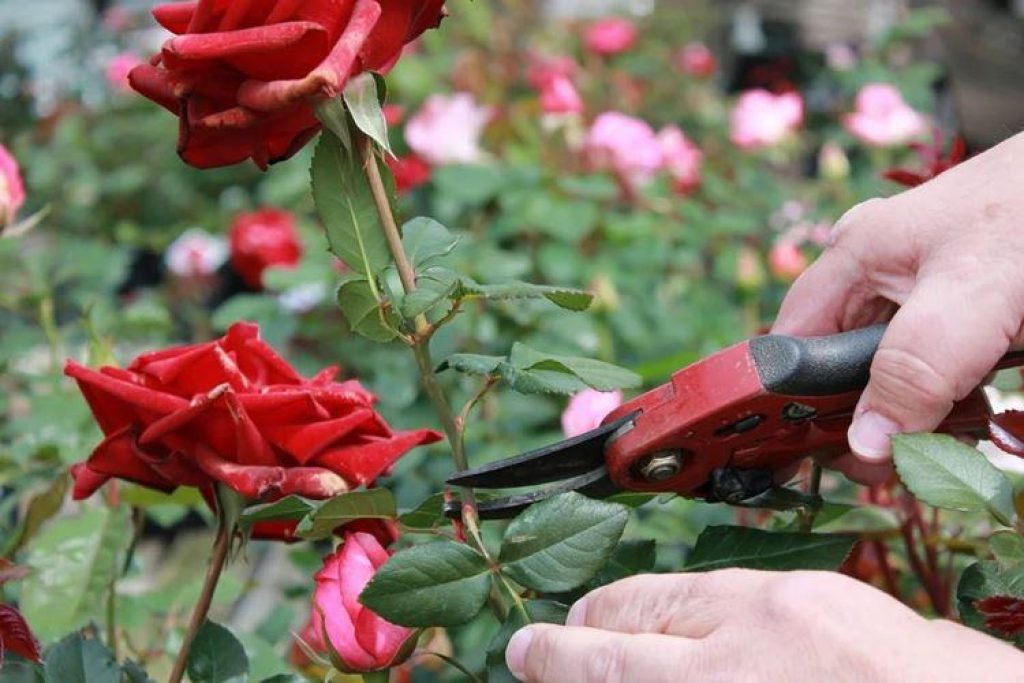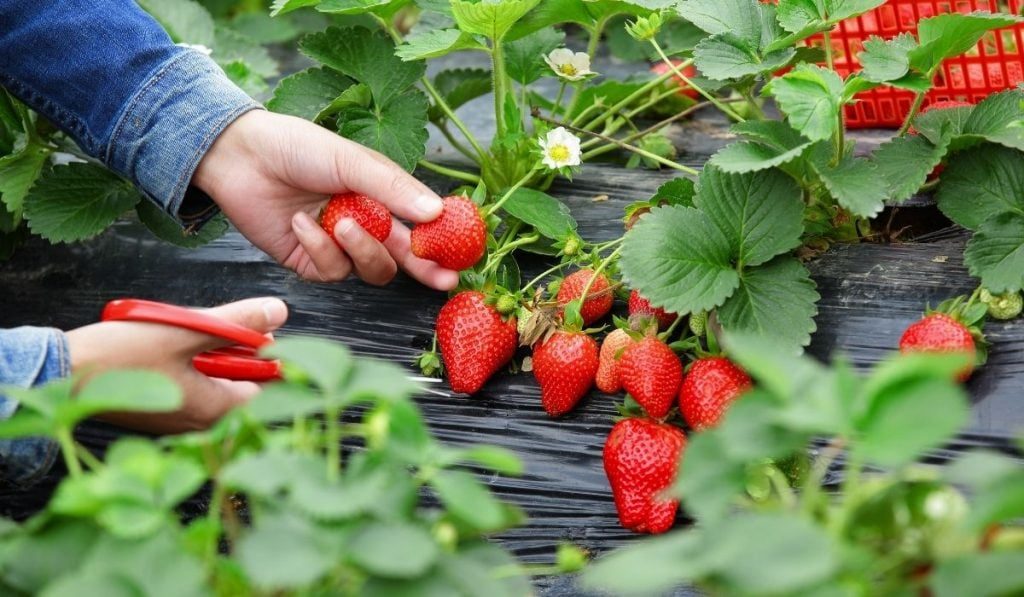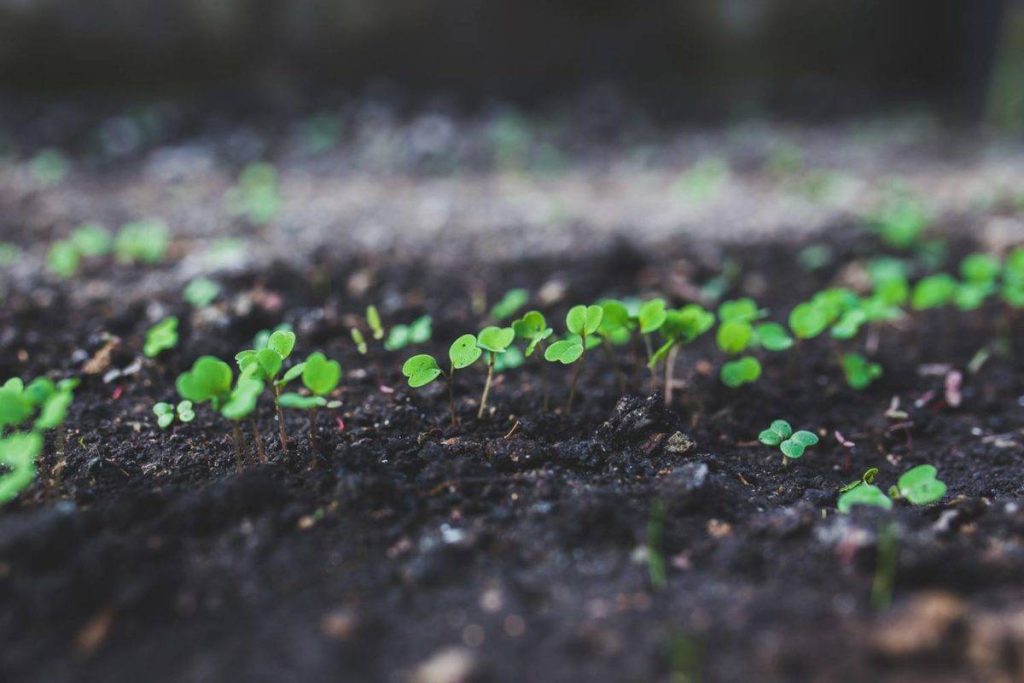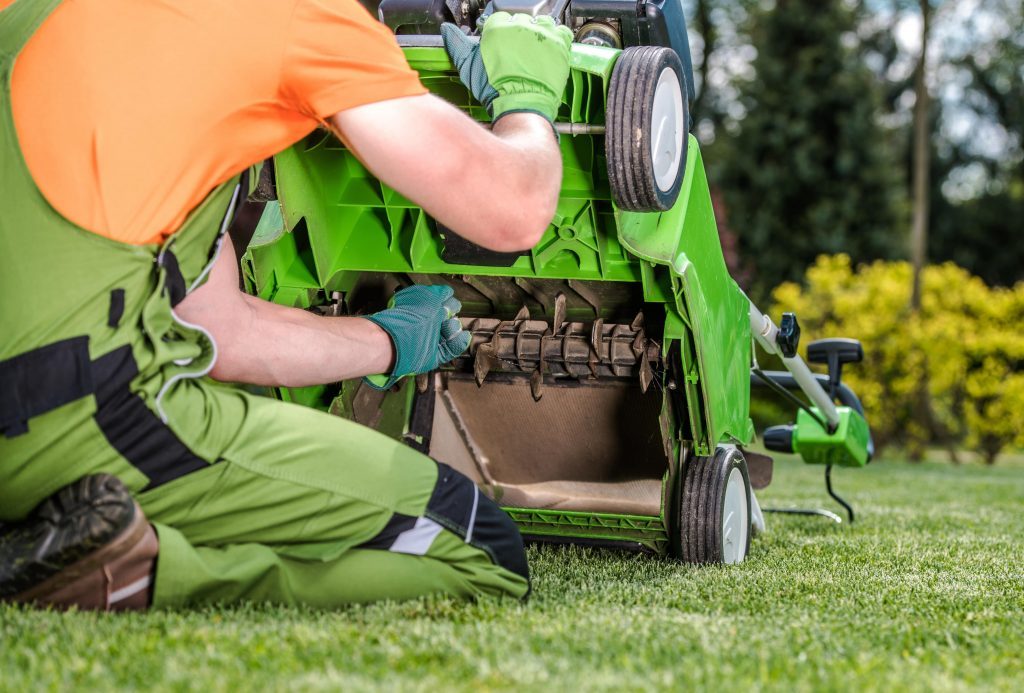



March ushers in the gardening season for both ornamental and kitchen gardens. Gardening enthusiasts and hobby gardeners may finally get busy sowing, pruning, tending and planting again. We have summarized the most important gardening tasks and gardening tips for March.
Cut back roses
As soon as the forsythia open their buds and begin to bloom, you can start pruning your roses. These will tolerate a heavy pruning in March, which will encourage lush blooms and strong shoots the following season.
For noble, bedding and standard roses, trim all shoots to three to five buds. Also remove any weak, diseased or frostbitten branches. Climbing and shrub roses, on the other hand, should only be thinned out. Only unbranched, strong shoots can be shortened by a third or a maximum of half.
Once you have completely pruned back your roses, the plants will be happy to receive a generous amount of fertilizer. For example, spread a mixture of mature compost and horn meal throughout the rose bed. Alternatively, use an organic or mineral fertilizer, whereby you should rely on a slow-release fertilizer.
Prune herbs
In addition to your rose bed, perennial herbs are also happy to be pruned. Early spring is considered the best time to prune savory, rosemary, sage, thyme or hyssop. The plants often lignify at their base and are best cut back by about one to two-thirds with pruning shears. In this way, you encourage the herbs to sprout, forming a bushier growth habit and more spicy leaves.

Mulch berry bushes
Wild-growing relatives of native berry bushes thrive mainly at the edge of the forest and in the undergrowth. As a result, they are accustomed to humus-rich soils that are covered with a thick layer of leaves during the fall and winter months.
To recreate these conditions in your own garden, mulching your berry bushes is recommended. For this purpose, cover the root zone of the plants with a mixture of compost as well as shredded shrub clippings. As soon as lawn clippings accumulate again, you can also use them as mulch material in a slightly dried state.
Cut back and mulch strawberries

If March has all but driven winter out of your garden, your strawberry plants are demanding increased attention. Start by cutting off withered and brown leaves. Then, carefully loosen the soil to allow the shallow-rooted plants more room to grow.
Now weeds can be removed almost effortlessly. However, be sure to catch all unwanted plants and seedlings, even in dense rows. After that, the entire bed will be happy to receive a generous fertilizing with mature compost or organic fertilizer, which you lightly work into the fresh, loose soil.
If an early harvest is dear to your heart, you can motivate your strawberries to bloom prematurely with a little trick: Simply cover the entire strawberry bed with black perforated foil so that the soil underneath can warm up more quickly. When the first flowers appear, remove the foil again so that useful insects can pollinate the strawberry flowers.
Fertilize bulb flowers and perennial beds
If your bulb flowers sprout only sparsely or if only a few flowers have appeared in the past year, species in need of nutrients such as hyacinths, daffodils and tulips will thank you for fertilizing. As soon as the first small leaves appear, a fast-acting mineral fertilizer is recommended. This does not have to be converted into a plant-available form by soil organisms beforehand, as is the case with organic fertilizer, and is immediately available to the plants.
If you have cut back all the flowers in your perennial bed after flowering, a mineral or organic slow-release fertilizer is recommended for them. Mature compost also provides your perennials with important nutrients. It can be spread about two to three inches high between the plants and carefully worked into the soil. Highly nutritious plants such as delphinium or phlox and foliage beauties such as funkias will also thank you for an additional fertilizer application around June.
Divide flowering perennials and ornamental grasses
Summer and autumn flowering ornamental grasses and perennials can be divided in the spring. As soon as March offers frost-free days that turn out to be neither too dry nor too wet, you can do this gardening. The ideal time to divide plants is just before they sprout. Before you begin dividing, cut off old stems about a hand’s width above the ground, if you have not already done this work in the fall.
First, loosen the soil around the plant to be divided and carefully dig it up with a digging fork. Try to damage as few roots as possible in the process. Then divide the root ball into two or more parts using a knife or spade. Filigree plants can often be pulled apart by hand.
You can cut off long, dried-up parts of the roots. Also work some compost into the soil before planting the divided perennials or ornamental grasses in the planned location. Set them in the soil to about the same depth as before and finish gardening by watering the freshly planted plants.
Prepare seedbeds and sow first seeds

If you have not yet prepared your beds for sowing, March offers the ideal time. You can now enrich the soil that has been dug up or loosened with a sow tooth with fine-crumbled, mature compost. Mix this with a small amount of horn manure and work the mixture flat into the soil with the gruber. Beds are then allowed to rest for about ten days.
If weeds and unwanted plants have sprouted during the rest period, remove them with a rake when leveling the beds. After that, the first seeds can be sown, for which, among others, onions, lettuce, spinach, radishes or broad beans are suitable. In addition, you can sow cut lettuce, cress, peas and radish.
For some plants, cultivation in a greenhouse or under protective film is useful. Raised beds and cold frames also provide an ideal way to protect early seeds from late ground frosts. If March holds warming rays of sunshine, cold frames and greenhouses want to be ventilated regularly. In this way, you avoid the young plants from becoming too warm and ensure an optimal climate.
Transplant trees and shrubs
In your ornamental garden, March offers the last date to transplant your deciduous shrubs and trees. If you put off this gardening task any longer, you risk sensitive species, such as witch hazel, not growing properly.
For successful transplanting, dig up woody plants with as large a root ball as possible. Immediately place the plants in their new location in the soil, press it firmly and then water the plant well. While delicate woody plants may have spent around three years in their old location, hardy species can still be transplanted after four to five years without any problems.
Mow and scarify the lawn

If the soil is dry and the lawn is free of snow, you can start caring for the lawn in your garden at the end of March. First, cut out the weeds and shorten the grass to a height of about five centimeters for the first cut with the lawn mower. By the way, this is also recommended if a robotic mower would otherwise take over this work.
Then the scarifier comes into play and frees your lawn from moss and lawn thatch. Make sure that the blades only penetrate the turf by two to three millimeters. To complete the first lawn care of the year, remove the loosened lawn thatch from the grass surface with a rake.
If bare or broken patches appear in the lawn, they can be remedied by removing the broken grass plants and then reseeding. Grass seed should come from the same lawn mixture if possible, creating a uniform lawn that shares the same maintenance needs.
Wake ponds from hibernation
Once you have prepared your beds, planted the first seeds and completed the first lawn cutting of the year, your pond will also want to be awakened from hibernation. In March, you can already remove leaf protection netting that you installed during the fall months. The riparian planting that provided adequate air exchange during the winter can also be trimmed back now.
To prepare your pond for the upcoming season, also check the pond liner and, after a careful inspection, clear the inlet and outlet of any existing blockages. Finally, dead plant parts can be removed from the water so that your pond is ideally prepared for further pond work.









